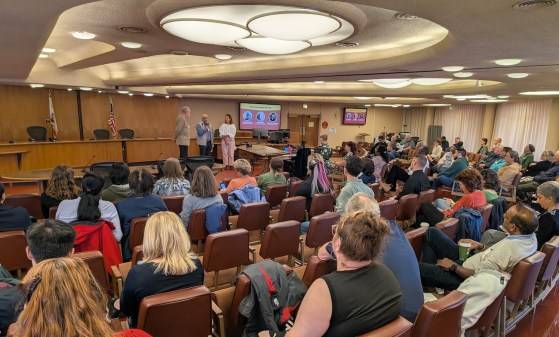Government’s digital transformation should be a constant and sustained process, says Washington D.C. CTO

The way government thinks about digital transformation needs to change, said Washington D.C. Chief Technology Officer Archana Vemulapalli.
“The whole modernization concept has to change,” she said in a panel discussion Thursday at the Digital Transformation Summit, presented by Dell EMC and produced by FedScoop. “We always think about modernization as a separate one-off effort, but it’s a very core part of delivering service.”
Government should take a page from other government agencies, Vemulapalli said, like transportation departments.
“Look at our roads — we put money aside to invest in our roads, to patch them, to repave them every couple of years,” Vemulapalli said. “Technology is the same thing. It’s a very core part of delivering service. You can’t deploy a system that’s 15 years old, and then say, ‘Oh yeah, we can let it sit for 15 years and then have to modernize in 15 years.’”
Instead, modernization should be an evolving process, the D.C. CTO said. In the district, Vemulapalli said the Office of the Chief Technology Officer that she oversees works with the city’s chief financial officer to develop a mechanism that allows the department to think differently about the modernization process.
“It’s like me having a street with potholes for 15 years and saying, ‘Oh, can we fix it quickly?’” Vemulapalli said. “You wouldn’t accept that, so I think that as technologists, that’s part of the frustration for a lot of us.”
In D.C., it’s a constant process, Vemulapalli said — but one that could potentially save the district, and other governments across the country, billions of dollars.
“If you get into that mindset, then you don’t have to do these drastic multi-billion dollar investments to go in and fix something because you waited until the end,” Vemulapalli said. “If you’re making a very strategic investment, you probably won’t spend as much.”
The situation is complicated when emerging technology is factored into the discussion, the CTO said, but the process and approach remains the same — it all comes down to having the right workforce.
“I think there’s a technology crisis in government,” Vemulapalli said. “The challenge is that while the private sector recognizes the role of what digitization means and how it needs to be managed, in the government we haven’t really done that as much.”
Government needs to focus on managing its digitization and building a workforce around the emerging technologies included in that process, rather than hiring for those positions after the technologies have arrived, she said. Without having the right leaders in place to manage the influx of new technologies, vendors could take advantage of unprepared government leaders, she said.
“When we’re your customer and you’re a really smart person giving me brilliant advice, but I don’t have the ability to consume it, I’m not going to implement it the right way,” Vemulapalli said. “If you come in, and you have an agenda that’s not with the best of intents, I will not know the difference.”
That concern and a lack of IT governance won’t go away anytime soon, she said, and as technology continues to evolve and and grow, the potential for error will also grow.
“There are a lot of well-intentioned people, but I think well intentions only last so long and government really has to start looking at how they’re setting up their technology departments and what leadership do you bring in,” Vemulapalli said. “We need to have policy and a position on how this environment is coming into our cities and what it means, and we’re playing catch up in a way that we’re not able to sustain.”






